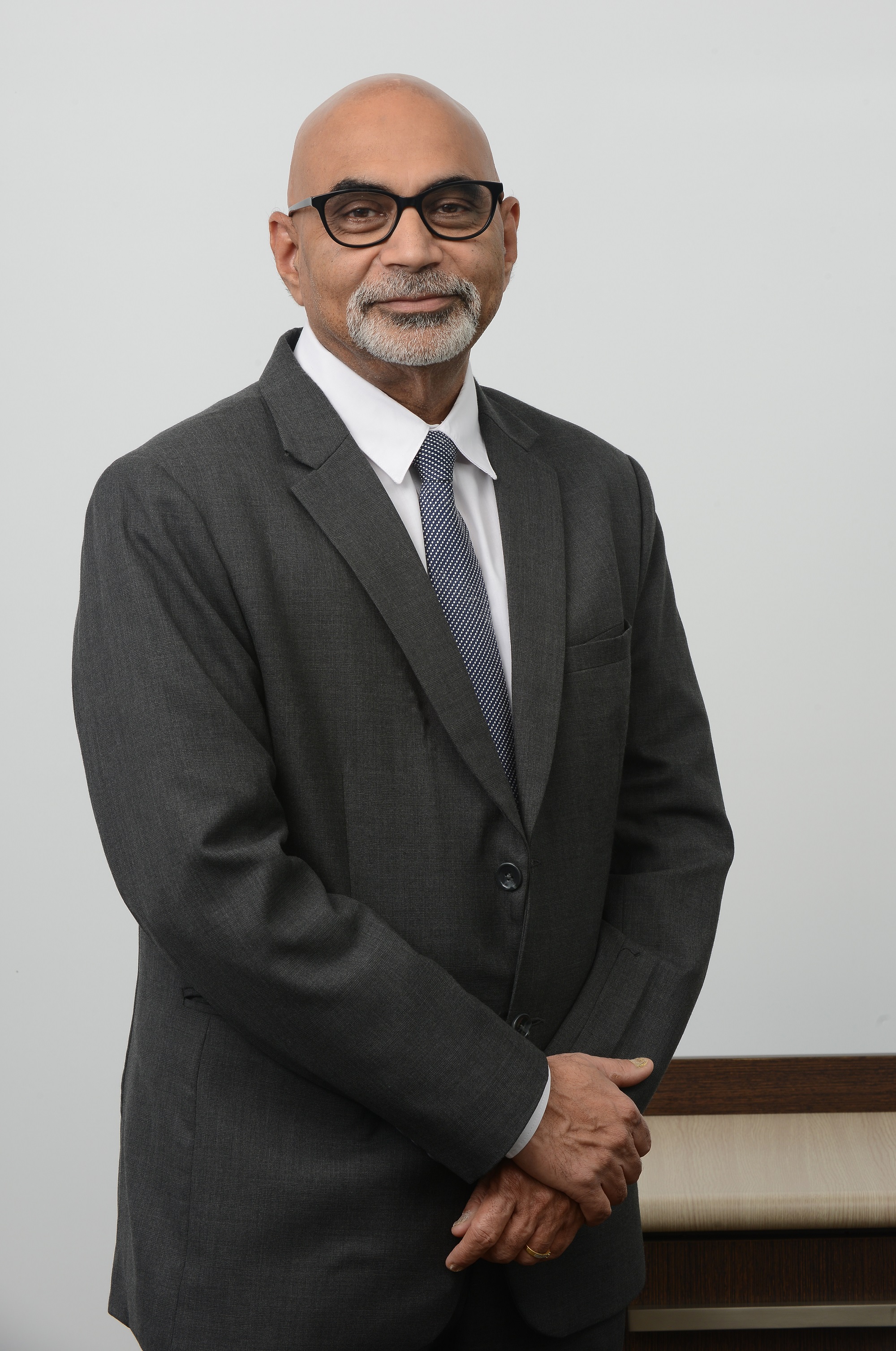When Prashant Kumar left SBI as chief financial officer to take charge of a sinking Yes Bank, he had a daunting task. But in quick time he set up a recovery team to handle bad loans and arrested the migration of deposits. His task is still incomplete, but he has put the bank on the profitability path.
In a candid interview with Indianbankingnews.com Editor Manju AB, the managing director and CEO of Yes Bank talks about the non-performing loan mess the founder-promoter left the bank with and the strategic steps taken to revive the troubled bank which was once the fourth-largest private-sector lender in India.
Yes Bank was saddled with bad loans and the promoters were accused of malpractices. Deposits were flying out. Everything was against us. But in the last six months we have not only pulled the bank out of the brink of a collapse but also put it on the path of profitability. We can truly call it a rebirth of the bank. In such a short time and with the coronavirus pandemic creating havoc, we have had a fantastic turnaround story.
It was more about putting the corporate governance in place. This is where the bank was lacking. As the credit operations were controlled by the promoter, there were no systems in place. We have now separated the risk functions from credit underwritings. The head of risk does not report to the chief executive but directly to the board. Similarly, the chief compliance officer reports to the board. The audit head also reports to the board. These were the key system changes that we introduced. If tomorrow we have a wrong person as chief executive, the same problems won't erupt. Governance is very important. If the team that originates the loan is also responsible for the recovery of bad loans, then there is a conflict of interest.
Corporate governance was very poor. The promoter was taking all the decisions. It was the call of just one person, which led to all this mess. Else, it would have been a solid and much bigger bank.
There was a huge mismatch between the loans on one side and deposits on the other. The Reserve Bank of India (RBI) had to step in and provide us liquidity support to bridge this gap.
I immediately created a vertical team of 100 people to look after the recovery and resolution of stressed loans. Also, we carried out fraud assessments. When we suspect a fraud, we do a forensic audit and declare it to the regulator.

The bad bank, which will be a subsidiary of Yes Bank, will have external investors. We intend to partner with other foreign and Indian stressed asset funds. There are a large number of investors who have the expertise in handling stressed assets. So instead of selling our stressed assets to ARCs, we would like to have our own ARC. This is our plan. Depending on the regulatory approvals, we will decide on the shareholding pattern.
We are in talks with stressed funds which are already in the country and also those overseas. So the bad bank project is work in progress.
There is a process for it. You take symbolic possession, then you take physical possession and then you dispose it off. We are doing it within the bank as part of our recovery activity. We acted under the Securitisation and Reconstruction of Financial Assets and Enforcement of Security Interest (SARFESI) Act, after Reliance Infrastructure failed to pay dues of Rs 2,892 crore.
This line of action will continue with the other loan defaulters. We are taking a planned approach towards the recovery of bad loans. In the bad bank entity, we can work along with other experts of stressed assets. We are progressing on all fronts.
We had a moratorium period on loans and deposits imposed by the RBI. But if the bank has started getting the deposits, and if it has started giving out loans and is earning an operating profit, it means the major problems have been taken care of. Apart from the impact of the pandemic, we are not facing any major issues. Our credit cards are one of the best in the industry. So is our internet banking platform. Fifteen days back, we launched a new platform. I have started getting calls from our non-resident Indian (NRI) customers from the US and Europe praising the platform.
Our overdue position is Rs 9,107 crore. Out of this, almost Rs 2,400 crore would have slipped to NPAs, but because of the Supreme Court order, we don't have to classify them as such at this stage. This is one book which we will continue to watch closely. We need to be vigilant on the other accounts as well, but the current overdue position is the immediate threat for us.
Regarding the mix of the gross overdue amount, corporate would account for Rs 7,500 crore, and retail and MSME (micro, small and medium enterprises) would together be Rs 1,500 crore. In the retail unsecured credit segment, we do not have any major problem because the exposure is still very small. We are trying to grow this segment.
Despite the Covid pandemic and the internal issues of the past, we have been able to get back to normal banking business and post this kind of operating profit. The credit cost is maximum due to the pandemic. So what we have achieved is very encouraging. It is important for us to use the operating profit instead of dipping into the capital of the bank.
We have been able to revive our business activity in terms of getting more deposits, giving loans and improving the fee-based income so that the business is back to the normal levels. Our focus is absolutely on our core business.
The writeback is from the sale of the DHFL bonds, which we offloaded. We have used the money entirely for provisions and not in the profit-and-loss account. We took a haircut as these bonds were traded in the market at 20 cents. But can you sell DHFL bonds without a haircut? We are using money from recoveries to further our provisioning so that the bank is adequately insulated in case of NPA additions.
While in the September quarter we disbursed Rs 6,000-6,500 crore in the retail and MSME segments together, our target in the current quarter is to push this up to Rs 10,000 crore. Out of this, retail would be Rs 6000-6500 crore and MSME would account for the remaining portion.
We plan to have an additional Rs 5,000 crore lent to corporates. We will continue to derisk some of our corporate exposures. So despite our lending to the retail and MSME segments, we would be seeing single-digit growth in credit.
The earlier problem with the bank was more in terms of large project financing, which we are not going to touch at all. In case of corporates, we will get in wherever we have the cash management and transaction banking so that we have a clear-cut visibility on the cash-flow. Then we can safely enter into the working capital consortium.
Our corporate lending will be very granular and we will spread it across a large number of companies. We will have no large-ticket loans; our loan size will be something like Rs 200 crore. It will be working capital loans, which is like a permanent loan with a reset every year. Even here, we will not be sole lenders but part of a consortium.

We got almost 29% deposit growth in six months. If you are in a difficult situation, you need to mobilise deposits from wherever possible. The wholesale deposit ratio is at 44%, but these are stable and long term put by good companies. There are no chunky deposits, and it is from a large number of companies.
The bank is very strong on the technology front. So it has a strong corporate relationship in terms of cash management services and transaction banking. Even if corporates start depositing between Rs 100 crore and Rs 150 crore, it adds up and takes care of our requirement.
Our CASA (current account and savings account), which is comprised of low-cost deposits, accounts for 24% of our total deposit base of Rs 135,000 crore. We need to drive this up further.
The customers who had moved away from the bank are now coming back. It is more in terms of engaging and communicating with them. We are also getting salary accounts. We are adding about 60,000-70,000 customers on a daily basis for CASA accounts. Earlier, in the best of times the bank was adding only 30,000-40,000 accounts. We have 1,100 branches, and in the respective local areas they are meeting with customers and asking for deposits. We are present all over India, but our concentration is in the north and west, Delhi, Mumbai, Haryana, Gujarat, Maharashtra, Chandigarh and Rajasthan. Immediately, we are planning to rationalise about 22 branches. We have over 1,400 ATMs .
The fact that the State Bank of India (SBI) holds 30% stake in the bank gives a lot of comfort to the customers in terms of their future safety. Axis Bank, ICICI Bank and HDFC Bank are also shareholders. SBI cannot bring down its stake to below 26% for three years. There is also a three-year lock-in for the other banks on 75% of their holdings. All this gives a lot of comfort to the investors.
We are offering some of the best interest rates in the banking sector. For one year, the bank offers interest at 6.75%. For tenures of 2-3 years, we are offering 7%. We will further reduce our rates. On 5 November we reduced deposit rates by 0.25%. MCLR (marginal cost of funds based lending rate) has also come down. When I took charge of Yes Bank, MCLR was at 9.6% and deposit rates were at 7.75%. Now this has fallen to 8.8%.
Yes Bank's biggest strength is its digital capabilities. Around 40% of the UPI (Unified Payments Interface) transactions is routed through Yes Bank. As UPI has about two billion transactions a month, Yes Bank gets to channelise 800 million of them. It is a high-quality technology bank. It is also a customer-oriented bank.
In fact, all the fundamentals of a good organisation are in place. If you just take out the NPA problem on the corporate book, then you have a well-run bank.
